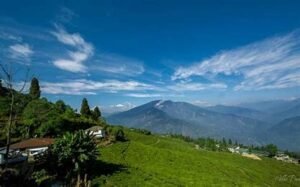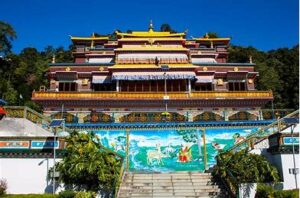Cherrapunji, a small town in the northeastern state of Meghalaya, India, is famous for its stunning landscapes, unique living root bridges, and mesmerizing waterfalls. Known as one of the wettest places on Earth, Cherrapunji’s natural beauty and rich cultural heritage make it a fascinating destination for nature lovers and cultural enthusiasts alike. In this blog, we’ll explore the history, culture, and unique aspects of Cherrapunji that make it a treasure trove of natural wonders.
Historical Roots: A Glimpse into Cherrapunji’s Past
Cherrapunji, located in the Khasi Hills of Meghalaya, has a deep historical significance. Historically, it was a part of the kingdom of the Khasi people, an indigenous group that has lived in the region for centuries. The name “Cherrapunji” comes from the Khasi words “Cherra” (a large stream) and “Poonji” (a place). This town has been an important cultural and administrative hub for the Khasi community.
During British colonial rule, Cherrapunji gained global attention for its record rainfall. The British built a trading station in the area in the 19th century. Even today, remnants of British influence can be seen in some of the structures in the region. However, it is the Khasi people’s history and relationship with nature that remain the heart of Cherrapunji.
Language and Communication: The Tongue of the Khasi People
The primary language spoken in Cherrapunji is Khasi, a language belonging to the Austroasiatic language family. Khasi is not only spoken in Cherrapunji but also in other parts of Meghalaya. English is widely spoken as well, especially in educational and governmental settings.
Communication in Cherrapunji is more than just the words exchanged; it is embedded in the cultural practices of the Khasi people. Traditional songs, oral stories, and local proverbs are used as a form of communication that connects people to their ancestors and their land.
Festivals and Celebrations: Embracing Culture and Tradition
Festivals in Cherrapunji are a significant part of the Khasi people’s life. Some of the most notable festivals include Shad Suk Mynsiem (a festival of dance and thanksgiving) and Behdienkhlam (a festival celebrating the harvest and honoring the spirits). These festivals are celebrated with vibrant dances, music, traditional clothing, and rituals. During these times, the community comes together in joyful celebration.
Each festival has deep cultural meaning and helps preserve the Khasi people’s connection to nature, ancestors, and the spiritual world. The celebrations in Cherrapunji are a fusion of joy, reverence, and community spirit.
Arts, Crafts, and Music: Expressing Creativity
The arts and crafts of Cherrapunji are a vital part of the local culture. The Khasi people are skilled artisans, especially in weaving and crafting. Traditional Khasi shawls, woven with intricate designs, are a popular craft item. Handicrafts made from bamboo, wood, and cane are also commonly used in the daily lives of the people. These arts not only serve as decorative pieces but are also essential to the way of life in Cherrapunji.
Music plays a significant role in the culture of Cherrapunji. Traditional Khasi music, which includes both vocal and instrumental forms, is commonly performed during festivals and celebrations. Percussion instruments, such as the dhol (drum), kham, and tangmuri, are integral to the music that accompanies dances and rituals.
Cuisine and Culinary Traditions: A Flavorful Legacy
The cuisine of Cherrapunji is a reflection of the region’s natural bounty. The people of Cherrapunji have a diet centered around rice, meat, and locally sourced vegetables. The Khasi food culture is characterized by the use of simple, fresh ingredients that highlight the flavors of the region.
Jadoh, a rice dish cooked with meat (often pork), and Dohneiiong, a pork dish with black sesame seeds, are among the most popular traditional dishes. Pork with bamboo shoots and Shngalak, a chutney made from fermented fish, also form an integral part of the local culinary experience. Local herbs and spices are used to create distinctive flavors, and traditional cooking methods are passed down through generations.
Attire and Ornamentation: Reflecting Khasi Identity
Traditional attire in Cherrapunji is deeply connected to the region’s culture. For Khasi women, the Jainsem, a handwoven cloth worn as a shawl, is a symbol of identity and pride. Men typically wear a dhoti or a shirt, depending on the occasion.
Ornamentation also plays a significant role. Both men and women wear intricate silver jewelry, which is often worn during special occasions and festivals. The jewelry is not just decorative; it symbolizes the wearer’s heritage and family history.
Beliefs and Values: Connection to Nature and Ancestry
Cherrapunji’s people hold strong beliefs rooted in nature and ancestral reverence. The Khasi tribe practices animism (the belief that natural objects and phenomena have spiritual significance) and also follows Christianity. The blend of these two influences creates a unique cultural and spiritual identity.
The people of Cherrapunji believe in the sacredness of nature and its role in sustaining life. Forests, rivers, and hills are seen as home to various deities and spirits, and the Khasi people hold deep respect for the environment. These beliefs shape the daily lives of the people, influencing how they interact with the land and each other.
Customs and Etiquette: Respect for Tradition
The customs and etiquette in Cherrapunji are based on respect for nature, elders, and the community. When greeting others, the Khasi people often exchange warm words, accompanied by a handshake or a traditional gesture of respect. Guests are treated with great hospitality, and offering food and drinks is a common way to show warmth.
In traditional Khasi society, respect for elders and community is essential. The community often comes together for shared events, such as weddings or harvest festivals, reinforcing the importance of family and collective well-being.
Architecture and Symbols: A Reflection of Heritage
Cherrapunji’s architecture reflects its cultural heritage and environment. Traditional Khasi homes are built with natural materials like bamboo, wood, and thatch. The houses have steep roofs designed to withstand the heavy rainfall of the region. The simplicity of the architecture is a testament to the Khasi people’s close connection to the land and their sustainable way of life.
The living root bridges, one of Cherrapunji’s most famous attractions, are a perfect example of how architecture and nature coexist harmoniously. These bridges, made from the roots of rubber trees, have been crafted over generations and are still in use today. These bridges are not just practical but also symbolize the ingenuity and resourcefulness of the Khasi people.
Oral Traditions and Storytelling: Preserving History
Oral traditions and storytelling are crucial elements of Cherrapunji’s cultural life. The Khasi people pass down their history, legends, and wisdom through oral stories, often told by elders around a fire or during important events. These stories serve to connect the younger generation with their ancestors and their rich heritage.
Songs, dances, and rituals are also a form of storytelling. They preserve the community’s values, beliefs, and customs, allowing future generations to learn from the past and maintain their cultural identity.
Interactions with Nature: Living in Harmony
Cherrapunji’s unique location, surrounded by dense forests, hills, and waterfalls, has shaped the way the people interact with nature. The Khasi tribe has a deep respect for the environment and practices sustainable living to ensure that the natural resources of the region are preserved for future generations.
The living root bridges are a prime example of this harmonious relationship. The Khasi people have carefully cultivated these bridges over decades, utilizing the natural growth of tree roots to create functional structures that blend seamlessly with the landscape.
Challenges and Preservation: Protecting Cherrapunji’s Heritage
Despite its natural beauty and cultural richness, Cherrapunji faces several challenges. The heavy rainfall, while a defining characteristic of the region, has led to erosion and environmental degradation. The increasing population and urbanization have also put pressure on the local environment and resources.
Efforts are being made to preserve Cherrapunji’s natural and cultural heritage. Local communities and organizations are working together to protect the living root bridges, forests, and waterfalls from damage caused by overexploitation. Sustainable tourism and eco-friendly practices are also essential to maintaining the delicate balance between development and preservation.
Contributions to Society: Enriching India’s Cultural Heritage
Cherrapunji’s unique heritage, from its living root bridges to its vibrant festivals, contributes significantly to India’s cultural diversity. The Khasi people’s connection to nature and their sustainable practices offer valuable lessons in living in harmony with the environment.
Cherrapunji also plays a crucial role in the region’s economy, with tourism and agriculture being key sectors. The town’s rich culture and traditions continue to inspire people across India and beyond.
Connection to Northeast India: A Cultural Gem
Cherrapunji is an integral part of Northeast India’s cultural landscape. It represents the region’s deep connection to nature and the traditions of its indigenous people. As part of Meghalaya, Cherrapunji is a vital link in the cultural, environmental, and social fabric of Northeast India.
Conclusion: A Call to Preserve Cherrapunji’s Heritage
Cherrapunji, with its living root bridges, stunning waterfalls, and rich cultural heritage, is a testament to the ingenuity and spirit of the Khasi people. It is a place where nature and culture are deeply intertwined, and it is crucial that we continue to preserve its beauty and traditions. Let us support sustainable practices and work together to protect Cherrapunji for future generations to appreciate and cherish.




